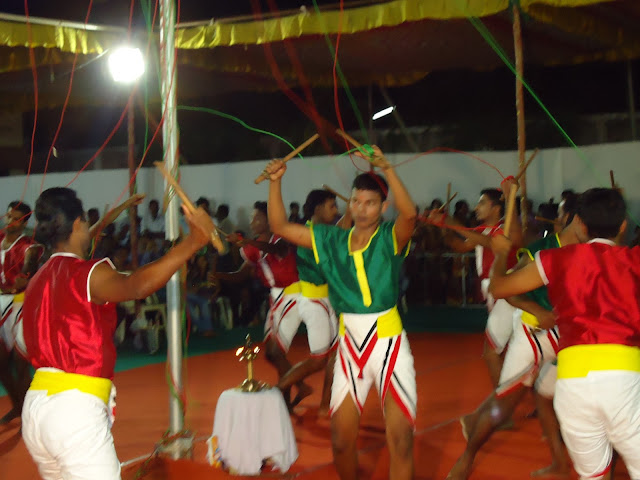When Surath Muthappan Sevasamithi requested PACT, Payyanur to perform Kolkali at
Surath, we took the challenge. Maithri, Theru headed by Santhosh Kumar agreed to help us. As
we were totally unaware of the venue where the function is being held, we
requested the Organisers to arrange an open space for the performance.
So we, a team comprising of 27, set
of from by the Okha Express which reaches Payyanur at an odd hour of 2.45 am. The
train reached Surat at the same time next day so that two days sleep got
disturbed. At the Station the organizers warmly received us and took us to the Prakathi
Hall, Adajen, the venue of the festival.
Sri. Praful, an officer at KRIBHCO
who was from Payyanur and a close friend of all was waiting and he took us to KRIBHCO
Guest House as the accommodation at the venue of the festival was rather
crowded with theyyam artists and others. The other friends of the Kolkali team
decided to stay at the festival venue itself.
Surath is the second largest city of
Gujarath and the festival is being conducted by the Malayalees of Surath
belonging to Kannur and Kasaragod Districts . The main programme is a
performance of Muthappan and they have invited us to present kolkali as an
additional attraction of the function for the current year.
The performance of kolkali impressed
everyone. They were spell bound by the perfection of Charadukuthi kali. We were
astonished to see a long queue of devotes waiting patiently to get a darsan of
Muthappan until late night. There was a splendid sadya by a team led by Ullas
from padichal

We found several friends there who
had been settled in Surath for long. What attracted us most was their devotion
and love for their home land and its culture.
watch charadu kuthi kali at http://www.youtube.com/watch?v=g7wDrNEtTYc























